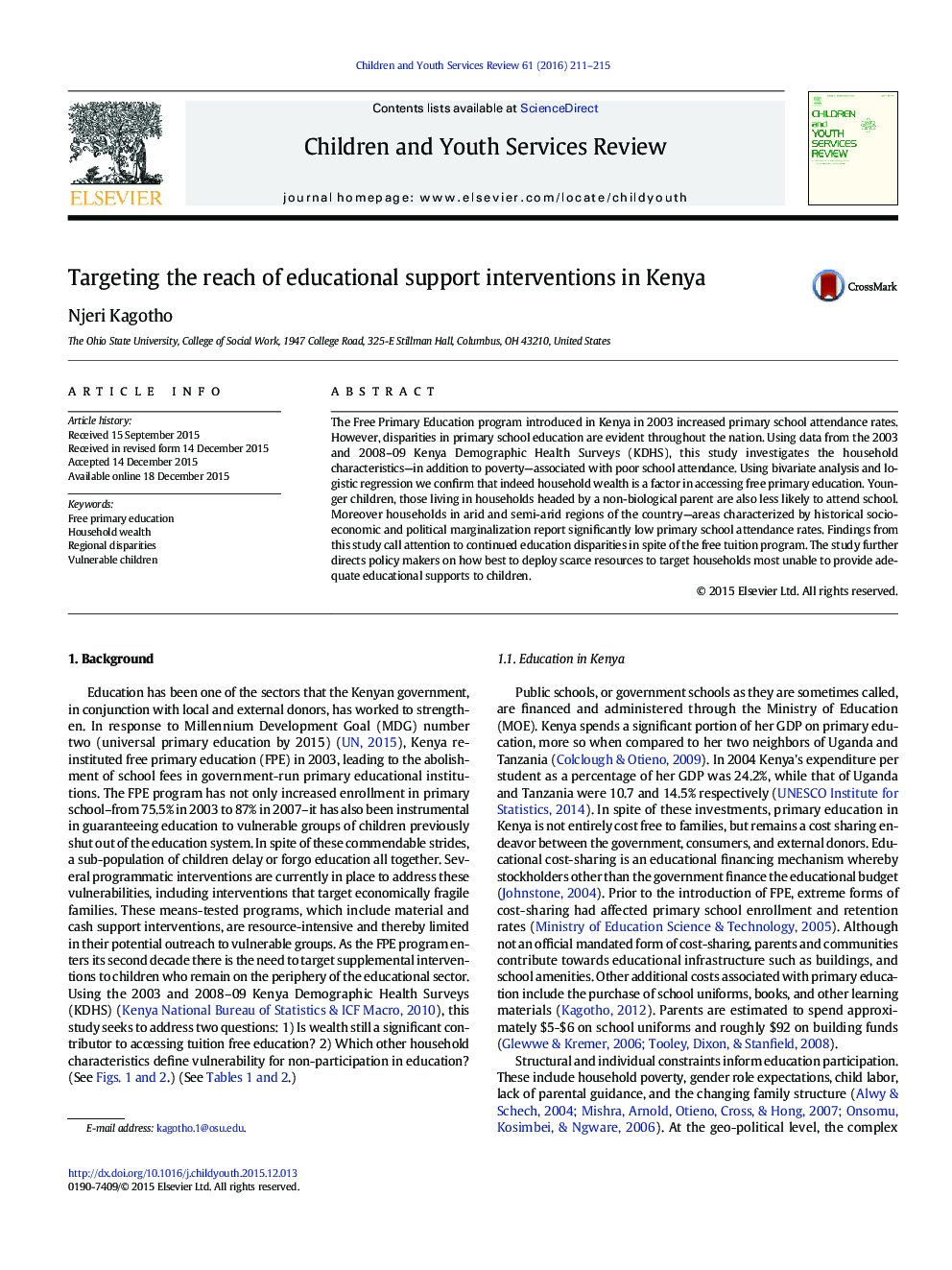| Article ID | Journal | Published Year | Pages | File Type |
|---|---|---|---|---|
| 345891 | Children and Youth Services Review | 2016 | 5 Pages |
•Primary education disparities continue even after the Free Primary Education program•Household wealth is still a significant determinant in accessing primary education•Children from arid and marginalized regions are most susceptible to low school attendance•The study identifies mutable characteristics that will help direct scarce resources towards households that lack the capacity to provide adequate educational supports
The Free Primary Education program introduced in Kenya in 2003 increased primary school attendance rates. However, disparities in primary school education are evident throughout the nation. Using data from the 2003 and 2008–09 Kenya Demographic Health Surveys (KDHS), this study investigates the household characteristics—in addition to poverty—associated with poor school attendance. Using bivariate analysis and logistic regression we confirm that indeed household wealth is a factor in accessing free primary education. Younger children, those living in households headed by a non-biological parent are also less likely to attend school. Moreover households in arid and semi-arid regions of the country—areas characterized by historical socio-economic and political marginalization report significantly low primary school attendance rates. Findings from this study call attention to continued education disparities in spite of the free tuition program. The study further directs policy makers on how best to deploy scarce resources to target households most unable to provide adequate educational supports to children.
